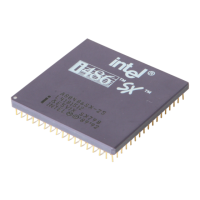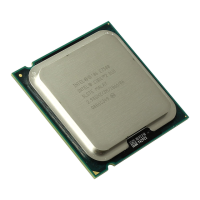10-33
PHYSICAL DESIGN AND SYSTEM DEBUGGING
10.6 THERMAL CHARACTERISTICS
There are thermal and electrical limitations associated with all the operating electronic devices.
In an Intel486 processor-based system, these limitations must be accommodated to achieve prop-
er system performance due to power dissipation concerns.
Generally, thermal and electrical characteristics are interrelated, and actual constraints depend
upon the application of a particular device.
To help the user, most of the general information on case temperature (T
C
), maximum current
and voltage ratings, maximum thermal resistance (θ) at various airflows, and package thermal
specifications are given in the individual Intel486 processor datasheets. Despite the wealth of in-
formation presented in the datasheet, it is impossible to provide graphs and reference tables to
cover all applications. The designer must accurately calculate several factors such as junction
temperature (T
j
) and total power dissipation (P
d
) in particular applications.
This section explains how to perform these calculations, thereby making designing with the
Intel486 processor more straightforward.
The thermal specifications for the Intel486 processor are designed to ensure a tolerable tempera-
ture at the surface of the Intel486 chip. This temperature, called Junction Temperature (T
j
), can
be determined from external measurements using the known thermal characteristics of the pack-
age.
The following two equations facilitate the calculation of the Junction Temperature (T
j
):
Let T
j
= junction temperature
T
a
= Ambient temperature
T
c
= Case temperature
θ
jc
= Junction to Ambient temperature co-efficient
θ
ja
= Junction to Ambient temperature co-efficient
P
d
= Power Dissipation (worst case P
d
= l
CC
* V
CC
)
Then:
T
j
= T
a
+ (θ * P
d
)
and
T
j
= T
c
+ (θ * P
d
)
Given a heat sink with a thermal resistance of θ
sa
(sink to ambient), and given the thermal resis-
tance from the junction to the case θ
jc
, then the equation for calculating T
j
is as follows:
T
j
= P
d
(θ
jc
+ θ
cs
+ θ
sa
) + T
a
Case temperature calculations offer many advantages over ambient temperature calculations:
• Case temperature is more easily measured compared to ambient temperature because the
measurement is localized to a single point (the center of the package).

